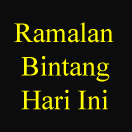A fault in which movement is subhorizontal,
parallel to the strike of the fault. Intense seismic activity
and deformation characterize strike-slip faults, considerable
differential movements between blocks, weak metamorphism,
and extremely high rates of and variation in sedimentation. A
strike-slip fault may be a transform (plate boundary) fault
only if it penetrates the thickness of the lithosphere and ends
in a subduction zone or terminates at a spreading ridge.
Many strike-slip faults occur in wide zones that are characterized
by many branches of the fault that split, diverge,
and rejoin in an anastomosing style. Regions where faults
converge are typically associated with uplift, whereas regions
where fault strands diverge are characterized by subsidence.
Individual strands of strike-slip faults may end, with the displacement
being taken up by another nearby fault strand.
The region between faults that are linked in this way may
host an accommodation zone, where minor faults, folds, and
other structures may help transfer the displacement from one
fault strand to another.
Strike-slip faults are rarely straight but instead are characterized
by bends or steps. These steps may show extensional
or contractional deformation, depending on the
orientation of the step, with respect to the sense of motion
along the fault. Right steps in right-slipping (also known as
right lateral) faults, and left steps in left-slipping (or left lateral)
faults form extensional bends. Steps in the opposite
direction place the bend in compression, forming folds,
thrust faults, and other contractional structures. Sedimentary
basins known as pull-apart basins form at extensional bends,
whereas fold-thrust belts and rapid uplift characterize contractional
bends.
Many strike-slip systems are not purely strike-slip but
have a component of compression or extension on a regional
scale, known as transpression or transtension. Transtensional
regimes are associated with normal faulting, drape
folding, and volcanic activity. In contrast, thrust faulting,
high-angle reverse faulting, folding, uplift, and the formation
of flower structures characterize transpressive regimes.
Relative plate convergence directions can change and thus
change the strike-slip regime from transpressive to transtension,
or vice versa.
Different types of sedimentary basins are associated with
transpression and transtension. In transpression, folding,
thrusting, and vertical uplift of mountains forms small foredeep
basins, cannibalistic nappes, flower structures, and shallow
sedimentary basins. Most of the eroded sediments from
transpression are carried and transported elsewhere, outside
the mountain range, and deposited far away in cratonic or
oceanic basins.
In contrast, in zones of transtension, basins associated
with normal faulting tend to be deep and associated with
very rapid sedimentation, with very little material transported
outside the orogen. Pull-apart basins are often associated
with strike-slip systems. These form very quickly, may be
tens of kilometers deep, and have normal faults on two sides
and strike-slip faults on the other two sides. These basins
may contain virtually every type of sedimentary environment.
Individual facies have a small lateral extent, and conglomerates
and breccias may be locally derived. Lacustrine
sediments are hallmark deposits of pull-apart basins, with
the lakes being long and narrow, with thick accumulations
of sediments. These are typically bounded by alluvial fans
fed from one or both ends of the basin. Continual subsidence
leads to facies remaining relatively stationary. After
lakes are filled, they become sites of braided streams, shallow
alluvial plains, or other, relatively quiet, sedimentary
environments.
It is often a challenge to recognize ancient strike-slip
systems in the geologic record. Different segments of a
strike-slip fault system may show pure strike-slip relationships,
extensional belts, or contractional belts. Also, strikeslip
faults often form along boundaries between different
rock terranes, making it difficult to know if there has been
lateral displacement between the different belts. Thus, to recognize
strike-slip orogens it is necessary to make a regional
assessment of the tectonics and not examine only a small or
local area.
Some characteristics of strike-slip systems are diagnostic
and recognizable in old orogenic belts. In some locations it
may be possible to match up geologic units, such as plutons
or distinctive belts of rocks that have been laterally displaced
by the strike-slip fault. In other cases, alluvial fans may be
displaced from their sources, perhaps with distinctive clasts
derived from one valley recognizable in a displaced fan.
Strike-slip systems are characterized by the development of
numerous angular unconformities in one location (such as at
a restraining bend), at the same time that rapid and continuous
sedimentation may be occurring in a nearby location
(such as in a pull-apart basin).
The regional structural pattern may be used to determine
the orientation of regional stresses, and their relationship to
the main faults in the system. Predictable patterns of folds,
strike-slip, normal, and thrust faults are associated with
strike-slip systems, and these differ from thrust and normal
fault-dominated orogens.
The types of basin filling may aid in the identification of
ancient strike-slip orogens. Conglomerates, basin-interior
lake sediments, and local volcanic rocks dominate early fill of
pull-aparts, whereas later stages and transpressional phases
may be dominated by fluvial sedimentation. All of these features
must be assessed together, as a single basin could be
interpreted in many different ways.
See also STRUCTURAL GEOLOGY; PLATE TECTONICS;
TRANSFORM PLATE MARGIN PROCESSES.

















Tidak ada komentar:
Posting Komentar
Catatan: Hanya anggota dari blog ini yang dapat mengirim komentar.